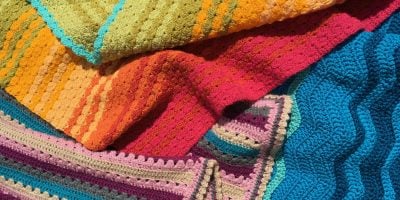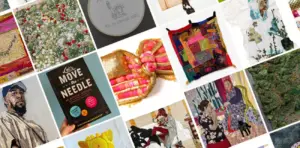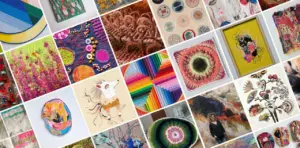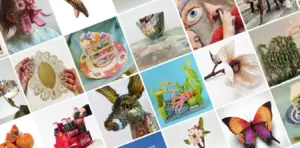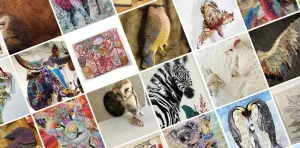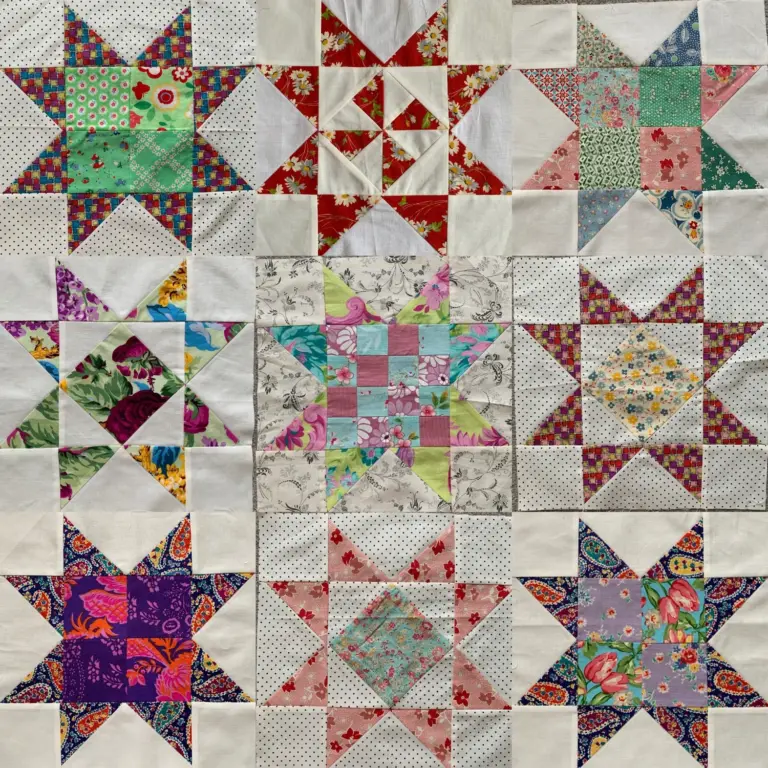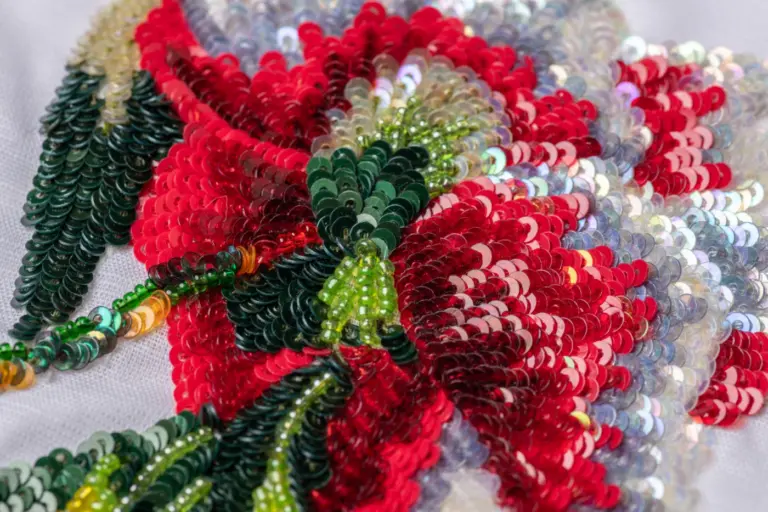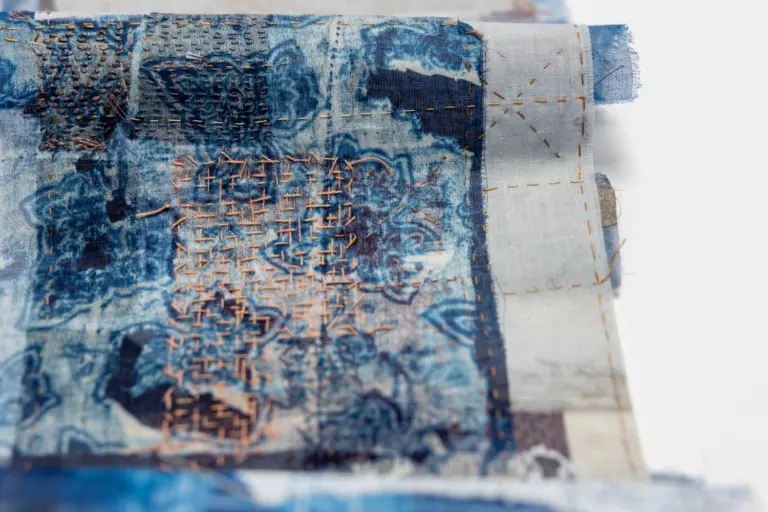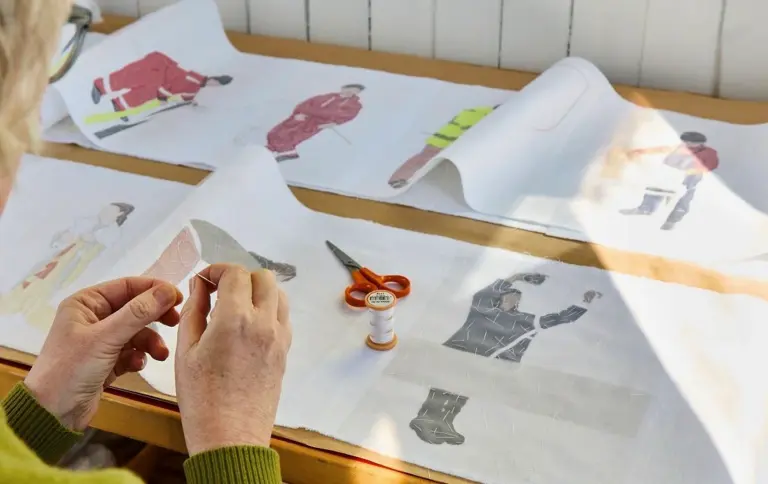Ruth Clayton (Kidd) is an inspirational artist specialising in Watercolour. As a trained graphic designer, teacher, exhibiting artist and successful studio owner there is a lot that we can learn from Ruth; particularly when it comes to the artistic process and unleashing the inner artist within.
Having taught art to children and adults for more than 12 years Ruth has some great advice for students that may find drawing particularly challenging. As guest tutor on our brand new Drawing for Design course, we caught up with Ruth to glean some of her creative wisdom on how to draw, paint and design.
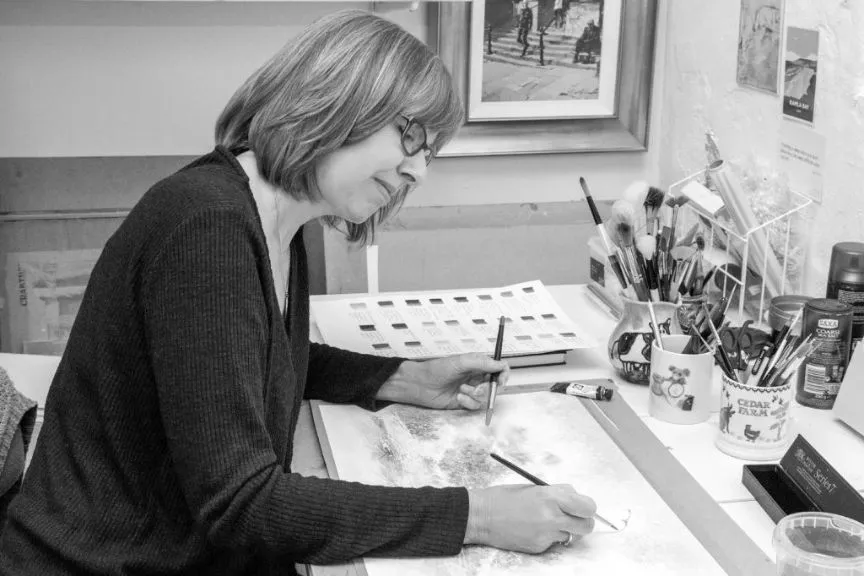
What was your first memory of Art? Who taught or encouraged you?
According to my Mum, I didn’t show any ability in Art when I was very young. My first memory of being recognised for my ability was in my second year at grammar School aged 12. I was clearly a late starter! I didn’t enjoy school but loved my Art lessons.
I would like to say that I had an inspirational teacher but that wouldn’t be strictly true as my teacher had his favourites and usually ignored the rest of the class. Fortunately, I was one of these favourites so did receive more attention than most, but I can’t say that he was the person who ‘set me on the path’ into the Art world.
To be honest my brother was probably the person who did that by giving me all his Art materials when he left home for college. I started to experiment with oil paints copying from art books and calendars. The first painting that I framed was a copy of a Heaton Cooper and I still have that hung in my studio today!
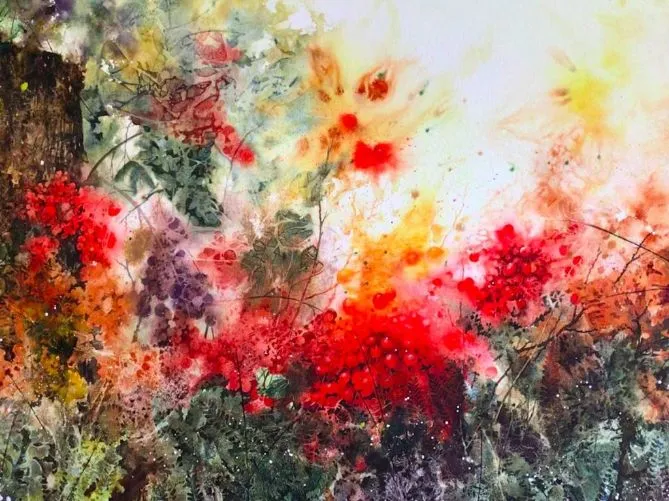
How much of your current success do you attribute to your training. How much did it add to the artist you are today?
I tend to paint in two different ways depending upon what I am working on. My vintage mice tins with hand painted interiors are very illustrative which draws on my initial training as an illustrator, but my large expressive watercolours are far removed from this highly detailed way of painting.
I think teaching adults for many years, where I was challenged daily to produce new ways of working, has stretched me personally and forced me to experiment with many different subjects and techniques. Many of my adult students re-enrolled year after year which meant that I had to keep finding new and fresh ways of working to keep the interest in the classroom. Students would request workshops e.g big brush watercolours, people, animals, abstract, botanical illustration, building etc. Keeping my students happy by experimenting with many styles stopped me from becoming stale as an artist.
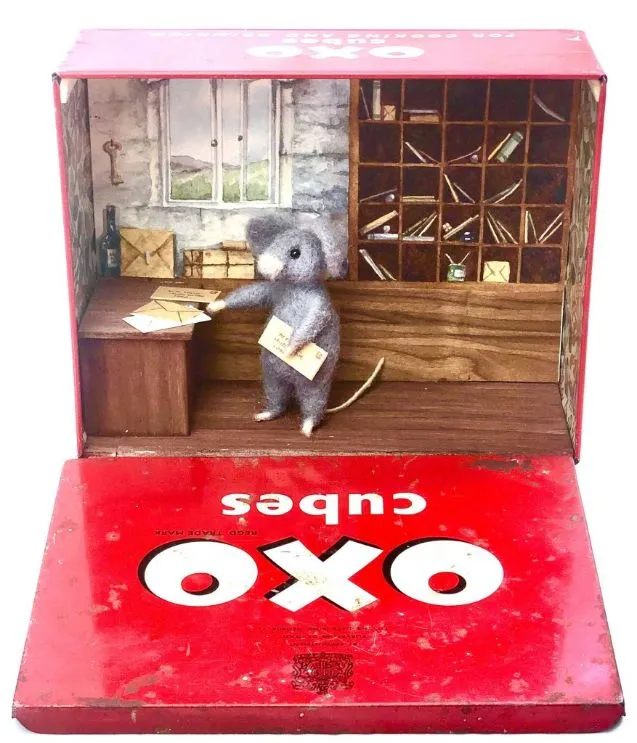
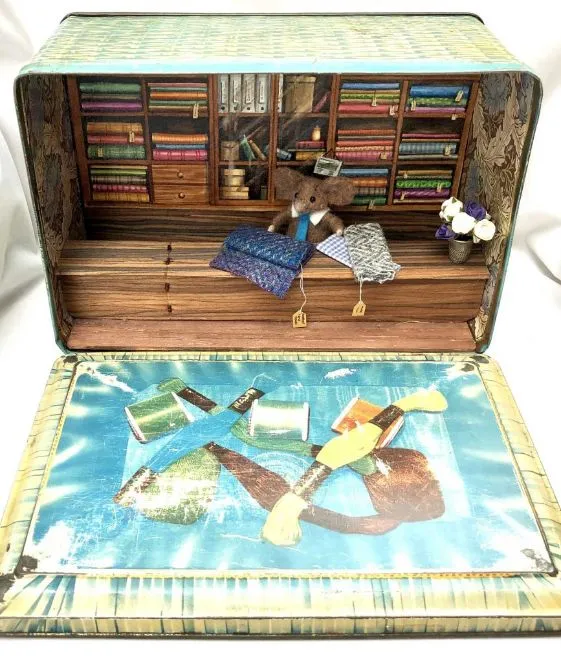
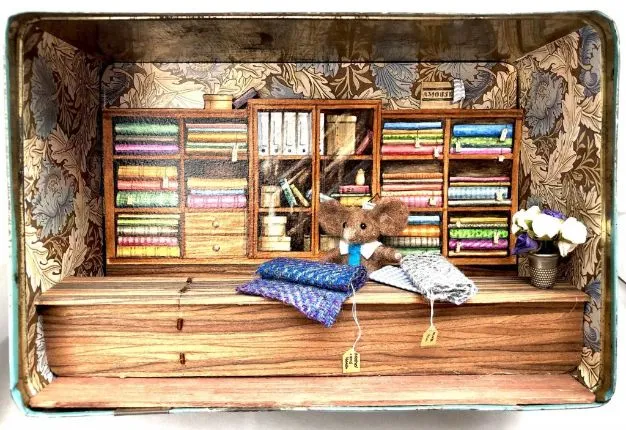
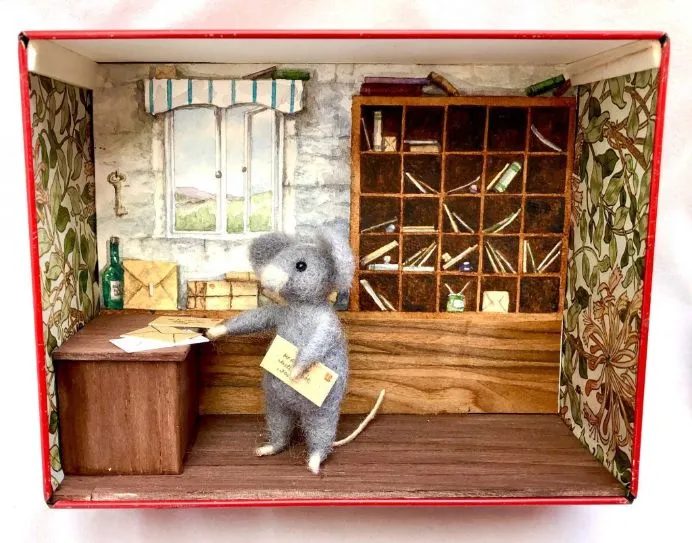
What Artists inspire you? Who would you like to sit next to at a dinner party?
I am inspired by several artists. My large watercolours have been inspired by contemporary artists like Anne Blockley, Shirley Travena and Jean Haines to name but a few and historically, I love the watercolours of Cezanne and admire artists like Caravaggio and George de La Tour mainly due to their use of chiaroscuro. However, when it comes to my illustration work this question is very easy to answer.
When I was on my foundation course, a lovely tutor saw that I loved to paint detailed interiors and set me a project to illustrate parts of the book ‘Cider with Rosie’ by Laurie Lee. I ‘ran’ with this and became very interested in becoming a children’s illustrator. I started to look at other artists who worked in detailed watercolour or coloured pencil This is when I discovered Jill Barklam and her wonderful Brambley Hedge books. I love them to this day and even though I no longer paint the highly intricate detailed commissions anymore the books are taken off my shelf when I need reference for one of my vintage mice tins. I would love to sit next to Jill at a dinner party and tell her how her books give me a lovely feeling of nostalgia when I read them; which I still do to my little grandson.
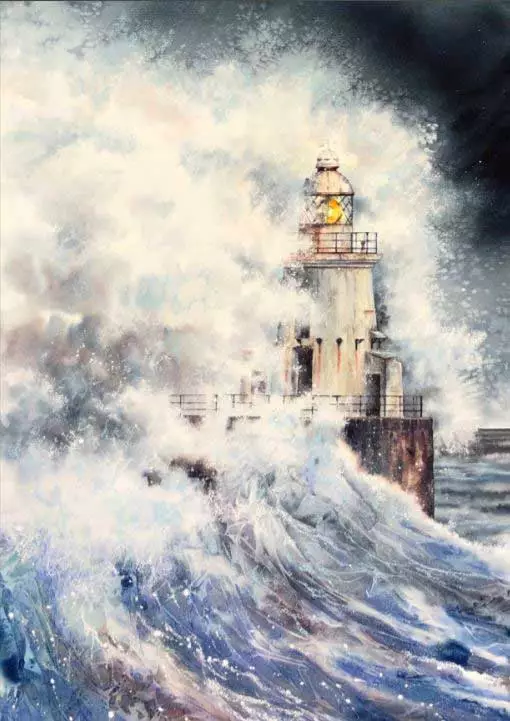
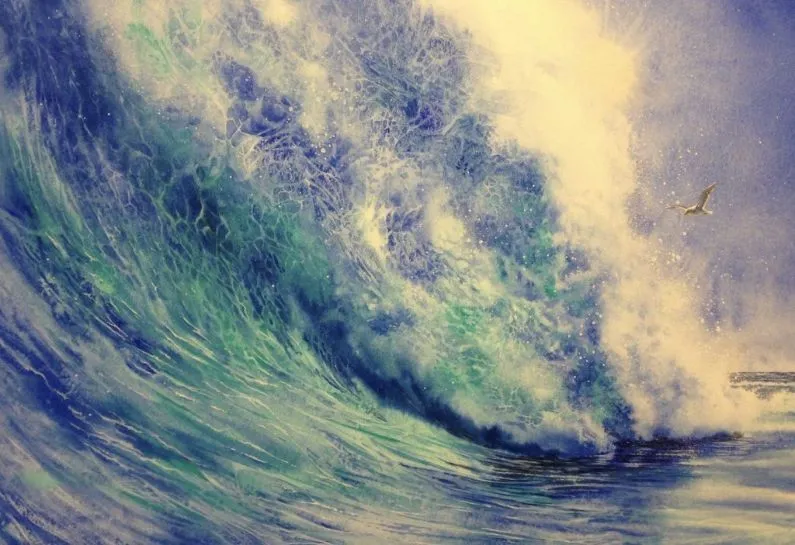
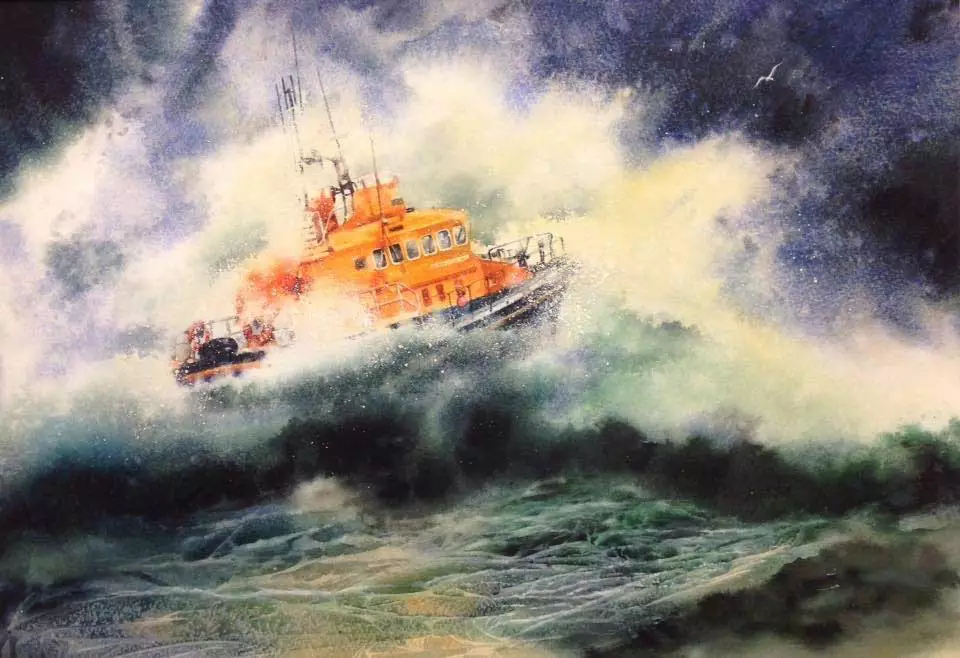
What is your current commission? Tell us about it.
I try not to do many commission pieces anymore as I feel that they can be very restrictive and inhibit the freedom in the way in which I work. However, I have set myself a personal project recently which involves painting the sea with all its energy but incorporating rock lighthouse of the British Isles.
My paintings are mainly of the sea but I like to include small parts of things like boats, wind turbines and now, lighthouses. They tend to demonstrate ‘Man versus Nature’. I have recently acquired some photographs of British lighthouses from a friend who has cycled around the coast photographing them all. I do try to visit lighthouses myself when I can, but I’m delighted that I can now use these royalty free photos as a reference too.
I use mainly watercolour and incorporate many techniques like the use of cling film for the patterns it produces, salt which creates a lovely speckled and snow like effect and tin foil which can make the painting of rocks that much easier with the jagged patterns it produces. I then use acrylic ink and granulation fluid for more texture and finish the piece with pastel. The pastel, mainly white, can really bring those waves alive.
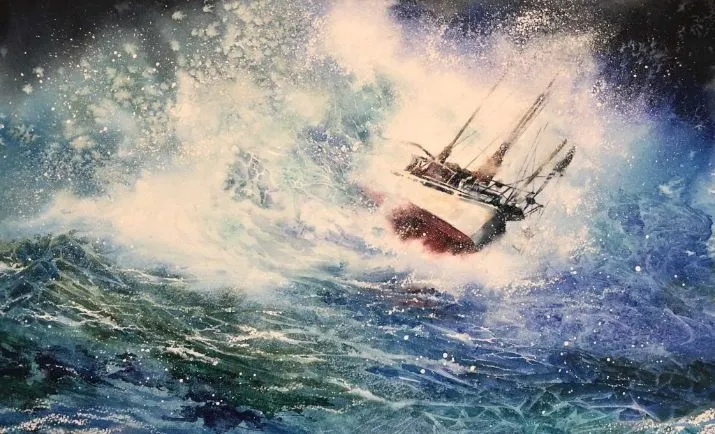
Many of our artists and students feel they are challenged by drawing or painting in order to create a new design. Do you have any advice for them?
As a qualified Art teacher, I taught many children between the ages of 11 and 16. I was always amazed to see how many children at the age of 11, after having moved up from primary to high school, had lost all confidence in their drawing skills. All young children love to draw and paint and are so proud of their work which invariably gets pinned up on the fridge. My question is ‘what happens to these children between the age of 5 and 11? What turns them from budding to nervous artists? Maybe they compare themselves with their peers or maybe a teacher has inadvertently quashed this creativity.
My first term with these nervous children was always to right that wrong and get them all on a ‘level playing field.’ I would do this by asking them to draw with their eyes shut or their non-dominant hand. We would then work with pattern and colour. Still life drawing was something that I never set for children until at least their second year in school.
I think many adults who fear drawing need to adopt a similar approach to art. Being a great artist does not necessarily mean you have to be great at drawing. Look at how Picasso, in his Cubist period, purposely defied the rules of perspective and concentrated on shape alone. Similarly, look at some of the ‘Fauvists’ who used colour to bring their work to life. Art can take on many forms and there are numerous ways in which a design can be produced from collage, line, texture and shape.
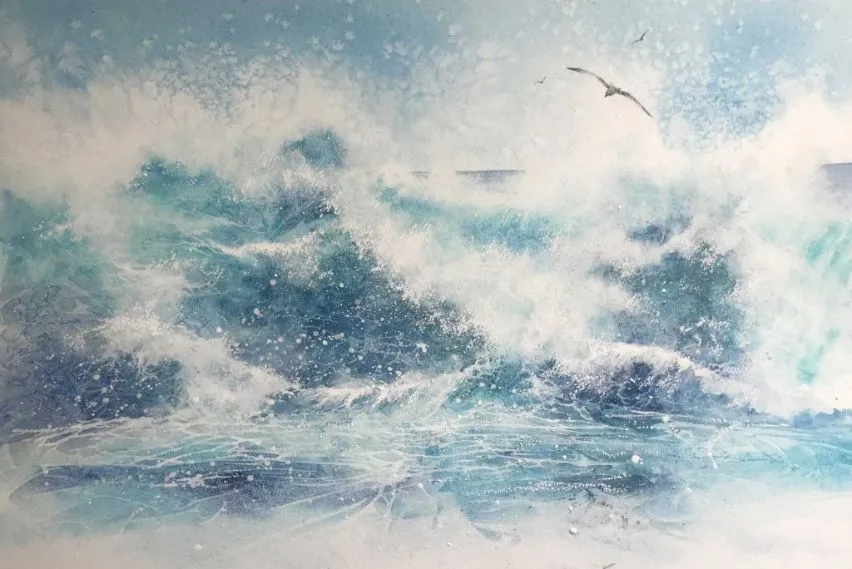
You seem to move seamlessly from one medium to another. Can you suggest ways or processes whereby our students could begin to do the same? Is one medium easier for beginners to start with?
I love watercolour! Many people think that watercolour is the hardest medium, but I disagree. However, it does depend on how you use the paint. The way that I use it nowadays is to allow the paint to ‘do its own thing’ to a certain extent.
I do a lot of ‘wet in wet’ which is where wet paint is dropped or painted onto wet paper. This allows the paints to run into one another. Fabulous effects and often ‘happy accidents’ occur if you let the paint do its stuff! New colours emerge and if the colours are granulating ones, they create beautiful textures and patterns.
My paintings rely more and more on the natural effects of the paint and I have started to imprint real leaves into a wet wash, for my ‘Hedgerow’ paintings, which, when dry, creates amazing organic shapes. This along with other techniques like sprinkling salt into a damp wash etc helps me to obtain the effects I want without any painstaking painting of detail. I find acrylic difficult these days, mainly since it dries so quickly. If I do use acrylic, I tend to use it straight from the tube (impasto).
Oil has the opposite problem of taking too long to dry and after using watercolour for so long, and achieving instant results, I find oil very frustrating. Watercolour pencils are very handy for design work and I often use these in my sketchbooks before moving onto a final piece.
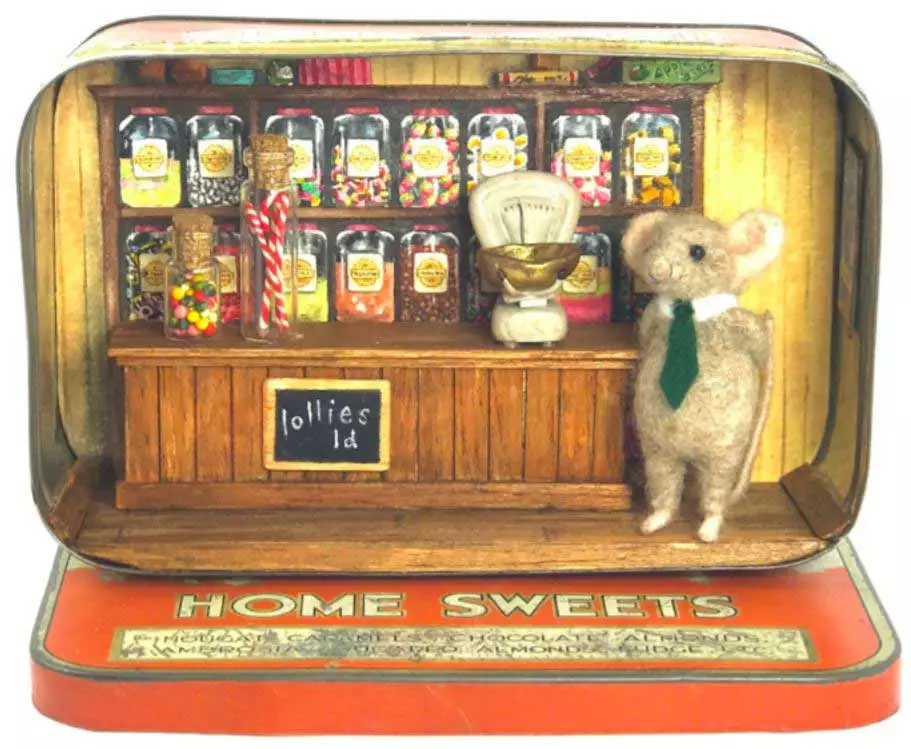
What’s next?
I have recently exhibited several pieces into open art exhibitions and two of my paintings were recently accepted by the lake artists society in Grasmere. This society was founded in 1904 by the artist W.G.Collingwood who was also the secretary to John Ruskin. Over the years the society has exhibited the work of many famous artists ranging from Kurt Schwitters to Russell Flint so I feel privileged to have 2 pieces of work hanging in their 114th exhibition.
I run many workshops in the area and have recently returned to CedarFarm Galleries in Mawdesley, where I ran a studio for 10 years, to do a watercolour workshop. I demonstrate at many art groups and societies in the local area and my partner and I have also started to run residential retreats in the beautiful setting of ‘St Marks Stays’ in Cautley. We run two a year in March and October. This year we also hosted a “Big Art Competition’ at Farfield Mill, where we have our gallery. The aim for this event was to complete a painting or drawing in 6 hours. What fun we had. We were delighted that over 35 people turned up to take part. We’re hoping that this will now become an annual event.
We recently exhibited at the Staithes art Festival in September. I would like to start some online courses and when I catch my breath, I will make a start on that!!
Ruth has filmed a brand new beginners course which demonstrates some easy ways to draw and paint. Head over to the course now and begin building your creative skills.


